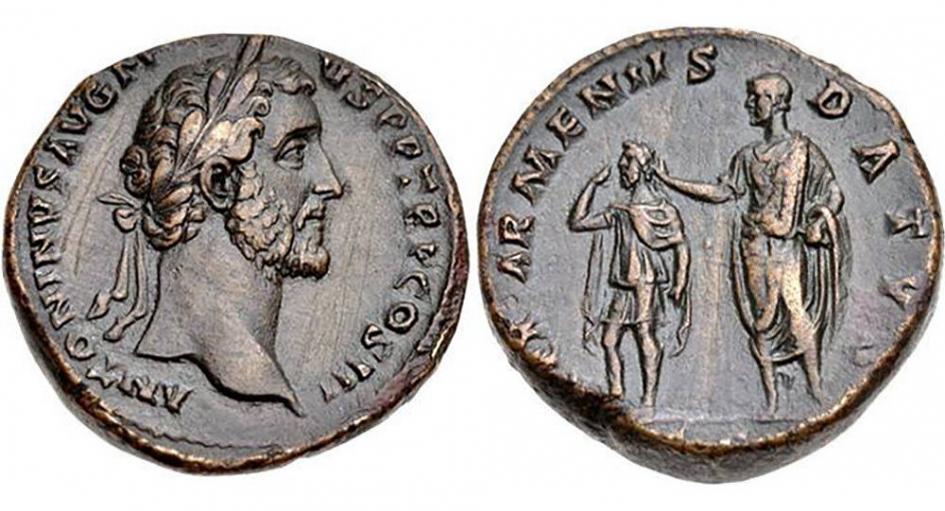Memory of Armenia on the Coins of Ancient Rome

Coins that have survived from the ancient times in a miraculous way can tell us many interesting things about long ago forgotten historical events and political details.
In this sense here are three old Roman coins from the second century AD which are extremely interesting. Let's try to decipher historical puzzles minted on them together.
In that era the Armenian King Tigran Sohemos The V ascended to the Armenian throne twice (144-161 and 164-186 BC). The first time the imperial crown came from the hands of The Roman Emperor Antoninus Pius (Antoninus Pius). Exactly that event was captured on the first bronze coin: the obverse (top side of the coin) depicts the emperor and his name, and on the reverse (back side) - is pictured the coronation of Sohemos and inscription in Latin: "Armenia has given the King" (Rex Armen Dat). After the death of the Emperor Antoninus Pius Parthian army commits invasion of Great Armenia, gives a devastating hit to Sohemos and transmits the power to its mentor, the king Bakura I, and Sohemos moves to Rome.
A year later, Rome defeats the Parthians, after which, according to the contract, The Western Mesopotamia goes to the Roman Empire, and Armenia declares independence, but the ruler of Armenia must be the king appointed by Rome. Thus, in 164, the Romans are crowning Tigranes The V Sohemos for the second time . During that period, ruled both Lucius Verus (Lucius Verus) and Marcus Aurelius. Lucius Verus was given the nickname "Armeniakus" (Armeniacus) after the seizure of Armenia by the Roman army.
On the obverse of the gold coin minted Emperor Lucius Verus and written his name, and on the reverse - the second coronation of Sohemosa and the inscription in Latin "Armenia has given the King".
On the front side of the last silver coin is depicted Lucius Verus, and on the back side is depicted an Armenian woman as a symbol of Armenia and minted the inscription - "Armen".

